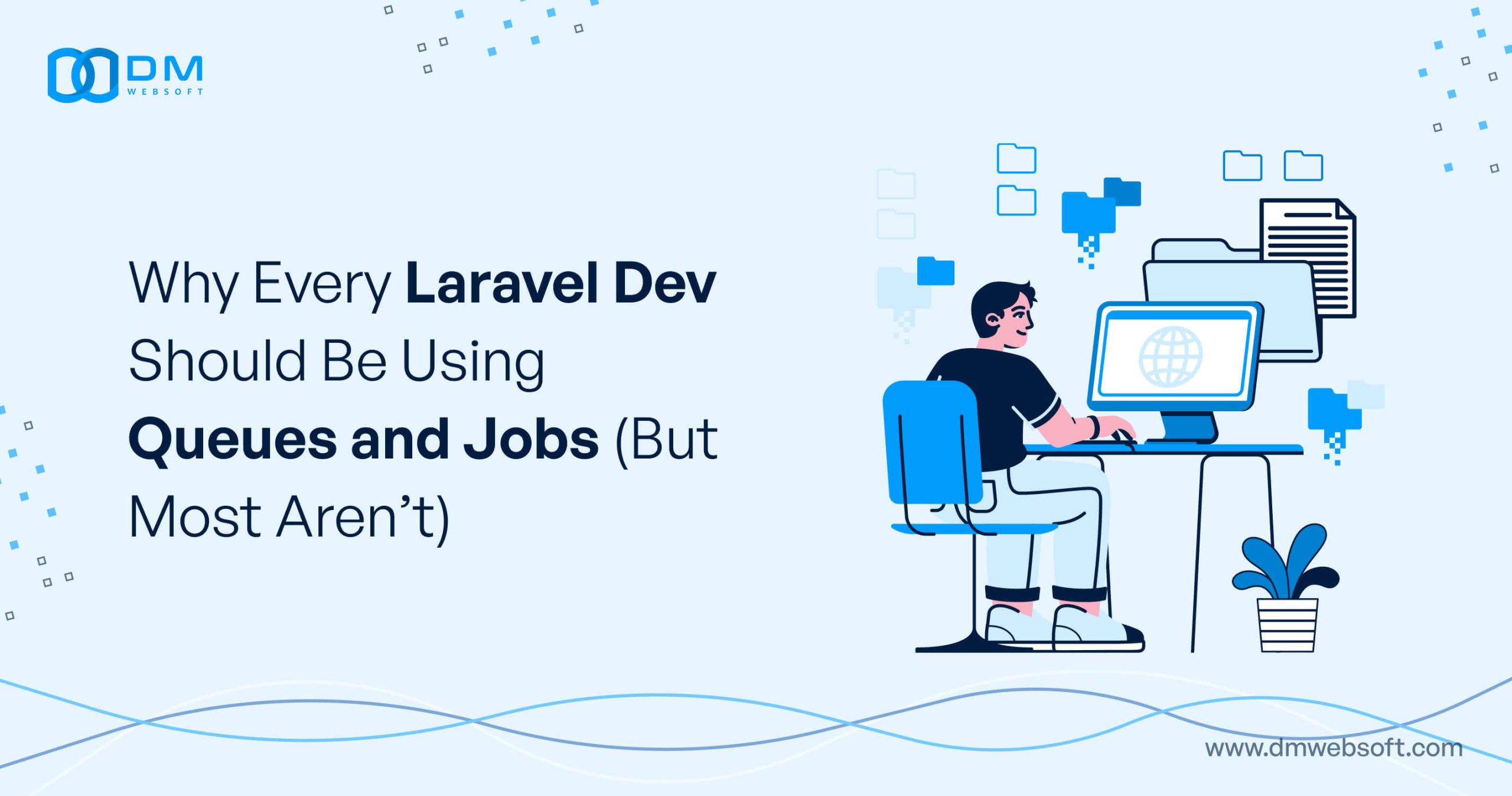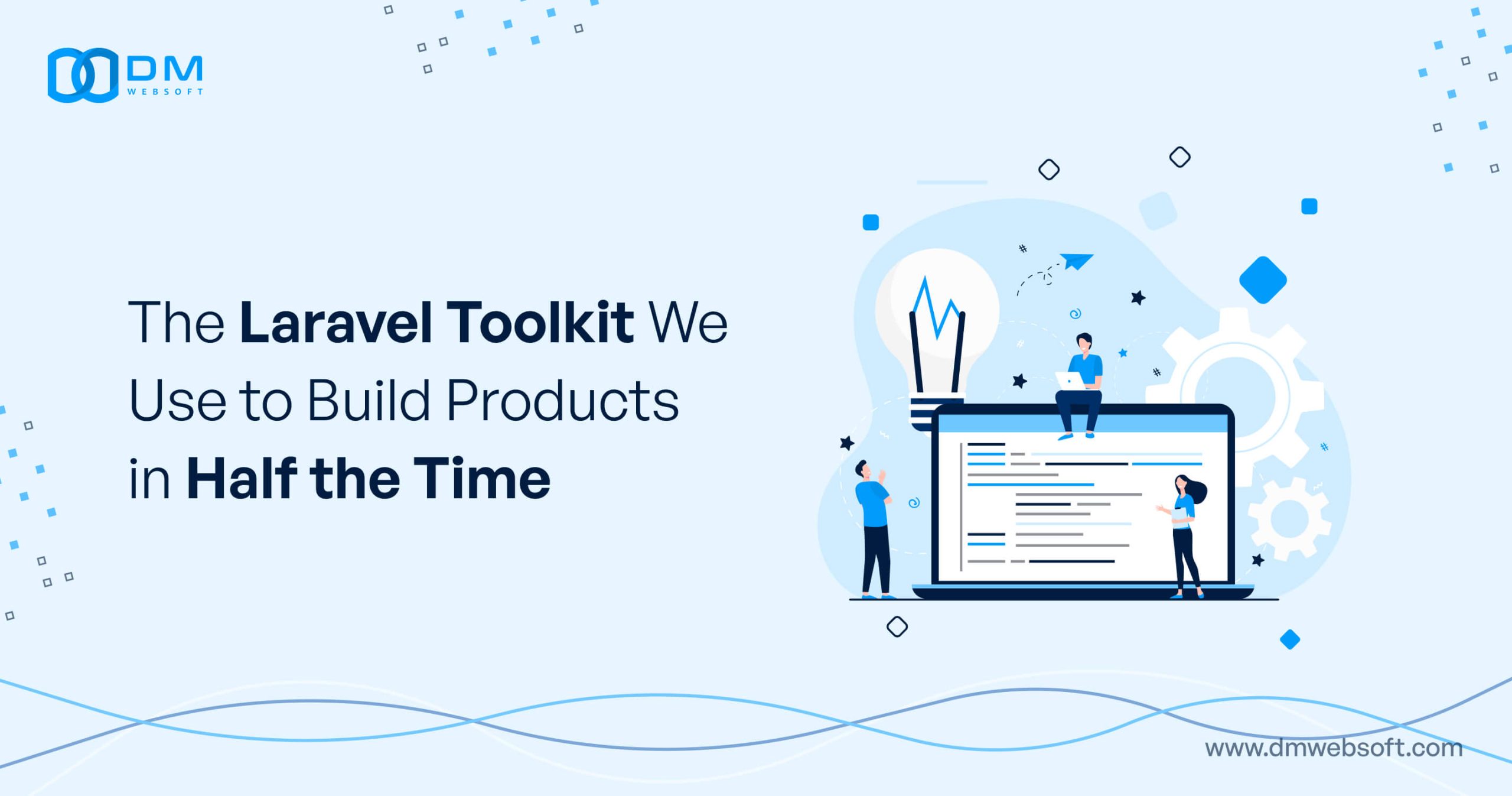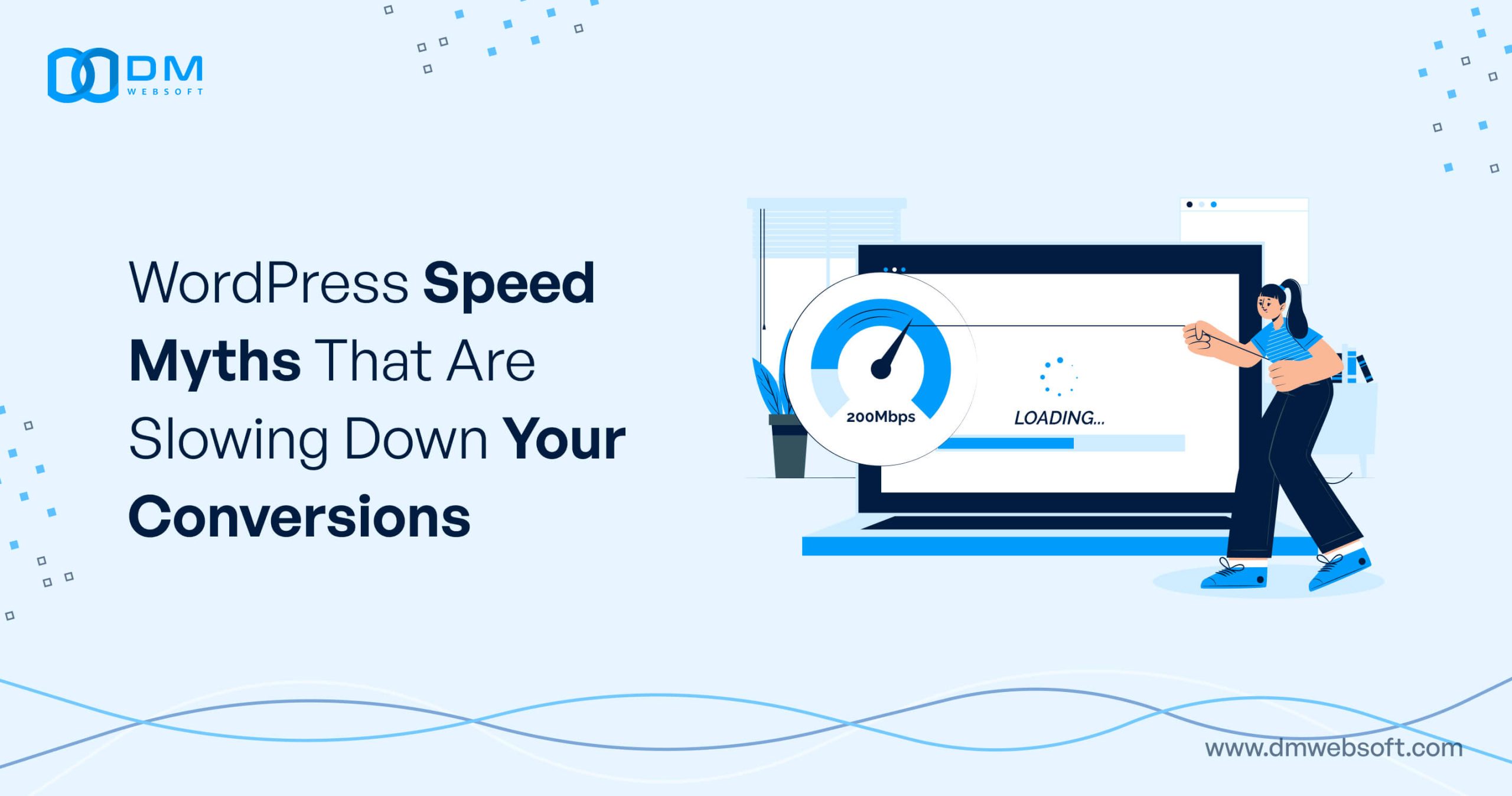DM WebSoft LLP exceeded our expectations! Their seasoned team of experts delivered a website that perfectly captures our brand essence. Their 15+ years of experience truly shine through in their exceptional web development skills.
The Rise of Low-Code and No-Code Development Platforms

TABLE OF CONTENT
Get in Touch
Introduction
The evolution of technology has brought very great changes to how we formulate, apply, and administrate our software. The latest ones to join the party are the low-code and no-code development platforms. They aim to increase the democratization of software development, allowing a much larger set of creators than just the traditional developer to build applications. It simplifies and reduces the complexity of the amount of coding necessary for the development of applications, which results in a much faster development process that allows much quicker responses to market demands.
Low code: a platform designed to smjson the process of development for the developer through graphical user interfaces in programming, which largely can save a lot of time and expertise for application development. No-code platforms enable people to design applications through a very simple drag-and-drop interface even if they have no idea about coding.
This opening section sets the stage for further investigation into these transformative platforms, which are set to reshape the landscape for software development.
Understanding Low-Code and No-Code

In a rapidly transforming world, getting the meaning of low code and no-code platforms is very key. Those are platforms that are leading to a redefined mode of developing applications, which enable one to develop software with ease and efficiency. As for low-code platforms, they intend to speed up application development by a drastic reduction in hand-coding, leaving developers mostly with a brief on design and functionality. This provides a drag-and-drop interface to develop applications by using visual components and reduces development effort by 90%.
What this no-code platform does is to take this further, giving people who have absolutely no idea of how to code the ability to create apps through the graphical, intuitive tools. Democratization of development would thus enable an even wider range of persons in the organization to contribute to digital solutions, thereby presenting a new culture of innovation and agility.
The whole tendency suggests that both low-code and no-code platforms will be founded on principles of simplicity, efficiency, and accessibility but for dramatically different bases of users. The low-code platform looks much more focused on professional developers who want to speed up the development but have all control over the produced product. These no-code platforms are designed for business users and other stakeholders who need to stand up lightweight applications quickly, without the help of developers.
These platform revolutions toward methodologies of development that are more participative, collective, and fast. Low and no code platforms empower the business to respond to the market changes and market needs dramatically; hence, they bring life into a culture of continuous innovation by lowering the entry barriers into software development.
Further drilling down on the low-code and no-code development platforms, the understanding of their essence and what makes the development process flow becomes pertinent. Both platforms—being a low-code or no-code—integrate visual development environments and come with simplified user interfaces, enabling drag and drop for any of the pre-built platform templates or components. Users hence get to build complex applications visual, not necessarily having to tangle themselves with a lot of coding work.
Much on the same vein
low-code platforms, therefore, are integrated with all the major databases, APIs, and external services in order for the created applications to be rich in functionality and scaling according to the business needs. They usually come with automation tools, data manipulation, and even the ability to support complex workflows, making it quite easy to strike a good balance between the usability of the system and its functional depth.
No-code platforms target business-oriented end-users who need working solutions fast but do not need any immersion in special technical details. Later platforms are strong in the way they allow users to create so-called applications that can automate simple operations, administer data, or facilitate the work of a business process.
These two normally give great customization features to the user, in such a way that he or she can customize the functionality and look of the application according to the requirement of the user. The other feature is that they highly encourage collaboration; that is, it allows more than one user to work on a project together and at the same time give feedback, therefore, increasing development further.
Essentially, low-code and no-code are not tools; they are more enablers for the application of a more agile, inclusive approach to application development. This reduces technical barriers and makes it possible to enhance innovation across all organization tiers, allowing the collaboration of technology development and business needs.
The Appeal of Low-Code/No-Code

What makes low-code or no-code development platforms attractive is the fact that those are the tools that even democratize software development, so it becomes accessible, efficient, and agile in every department. This will keep companies at pace with the market, reducing development costs, and also allow non-technical staff to participate in the contribution of digital solutions. Low-code or no-code app development platforms democratize innovation by making the development process easier for everybody, regardless of coding specialization at an expert level. This democratization is appealing in and of itself within an accelerated business environment, whereby the ability to adapt and innovate very quickly forms a huge competitive advantage.
Delving deeper into the attractive low-code and no-code platforms, we may want to look at their transformational impact on a number of business and development dimensions. Lowering the barriers for creating digital solutions at a pace that makes businesses—irrespective of the size—able to innovate and thus be relevant with their products or services toward the changing market conditions.
Firstly, the speed of development that low-code and no-code platforms offer is unparalleled.
While the traditional development cycles could stretch to take many months, if not years, yet these platforms shorten this time to weeks or even days. Such a quick turnaround is invaluable in today’s fast market, whereby getting there first often represents a difference between market leadership and also-ran status.
Second, there is the cost advantage: low- and no-code platforms obliterate the necessity of having large development teams and the associated overheads. This so-called democratization will enable small and medium-sized businesses to compete head-to-head with large enterprises, either by creating their own bespoke solutions or by customizing the off-the-shelf products they have acquired, without bearing the heavy cost.
All these cut across all platforms and promote a more common approach to developing digital solutions. For example, the involvement of non-IT staff in input on app development alone allows the company to tap a much larger pool of ideas and user insights in order to be more innovative and user-centric. Inclusivity above will help bridge the possible gap that might be within IT and other arms of the organization, hence further collaboration and understanding.
The other major advantage is an easy way of maintaining and updating applications. In traditional coding, most of the time making any change or the other may turn out to be cumbersome and time-consuming in nature.
Most no-code/low-code platforms usually feature a visual interface and modular designs that make it relatively easier for even non-tech users to be able to update the apps with, at other times, user feedback or changing requirements. Finally, these platforms far surpass merely putting up new applications; they also address integration and automation. Most businesses will have a patchwork quilt of existing systems and software. Low-code and no-code platforms help make the systems more efficient, increasing flow throughout the organization.
In fact, low-code and no-code platform solutions do not just have technical merit; they are appealing for their essential help in turning to much more elastic, inclusive, and innovative methodologies of dealing with business challenges, thus making technology be the driver of transformation and not a stopping point.
How Low-Code/No-Code is Transforming Industries
The advent of low-code and no-code development platforms is fast disrupting industries that enable a much faster digital transformation. The development process using both platforms is very fast in deploying applications, thus shortening the time and cost used in conventional development. This agility allows businesses to quickly change along with the changes in the market and customer needs. These platforms are already being used in different industries—health, finance, and retail—for optimizing operations, leveraging their potential, improving customer experiences, and, by doing so, improving the services through innovation. Most of all, they allow a culture of continuous improvement and innovation by democratizing the development of applications to every level within an organization.
Low code and no code are not just the tooling for the isolated business; rather, it enables these businesses to become a driving force in a much larger industry transformation. They allow businesses to prototype, iterate, and deploy solutions at pace, underpinning a shift towards more agile and responsive operational models. The technological developments shall be instrumental in the realization of quality services to patients for effective organizational and operational efficiency. It helps quickly deploy applications for customer service and management, which help improve customer experience, ensuring regulation compliance within the financial sector.
There was a retail revolution in customer management and inventory management, along with personalized shopping experiences and effective management of the supply chain through these apps. A sector that has highly benefited is education, from the advent of customizable learning management systems to manage the different types of learning and administrative purposes. The same trend has also fueled the push for low-code and no-code solutions even in the public sector, where service delivery is smoother but, most importantly, accessible to citizens.
And these platforms are enabling the traditional barriers for a domain expert to start contributing directly towards the digital solution without necessarily having the technical expertise for it.
It then leads to a more focused and effective application that closely follows specific requirements of the industry. Additionally, the capability of changing and updating actually allows the solutions to be dynamic according to the ground feedback or when a need arises. This communicates directly to remaining competitive for industries.
Collectively taken into consideration, the low-code and no-code development tools are arming every kind of industry to embrace digital transformation, innovate at an even faster pace, and be more adaptive to emerging changes within their markets and customers. Take, for example, the low-code and no-code platforms that impact the transformation of the industries where flexibility and scalability are key in any of them. These platforms supply the power to organizations to flex with custom solutions, so that they would be enabled in such a way that they respond effectively either to the industry trend, regulatory change, or competitive pressure. With the changing landscapes of industries, the flexibility through these technologies of low-code and no-code will be required for keeping an innovation moving and staying competitive in any swift market ambiance.
Choosing the Right Platform
Organizations, therefore, need to exercise a great deal of caution while opting for the most suitable low-code or no-code platform for their rapid application development strategy. The decision should be taken after much thought about organizational requirements, technical needs, and strategic aims. The following could be some of the things that need to be evaluated in choosing the appropriate platform: the complexity level of applications which shall be developed, technical competence of the users, integration with existing systems, scalability of the platform being considered, security, and support from the vendor. Organizations should also be in a position to assess the capability of the platform to evolve with the changing business needs and, in most cases, keep pace with technological advancement to ensure sustainable and future-proof digital strategies.
Definitely, a combed scrutiny of your low-code or no-code platform gels with the organizational needs. Start with one purpose of your application, as identified, and the problem you want to solve. Consider your intended users’ technical skill level. For non-developers, a no-code platform like Zoho Creator would be perfect. If your users are somewhat technically capable and have experience in the field, you might want to consider low-code platforms as well.
Ability to Int Integrate
Always consider a platform that will have easy integration with your current systems, databases, and other third-party services on matters relating to both enhanced functionality and data consistency. Scalability is a very important issue. The system should be able to handle increasing numbers of users and the expansion of functionalities without great loss of performance.
Security should ensure that the most sensitive protection data, from data breaches to regulatory compliance, should be safely accessed by the user. Main services that should be evaluated in the platform to ensure they fit into your specific business needs for customization include Identity Branding and User Experience Tailoring.
Level of available community support, resources, and whether there is a marketplace for extensions or pre-built components.
Support: Training resources for vendor support and successful onboarding for continued development.
Last but not the least, consider TCO, including subscription fees that may have to be incurred, possible development costs, and any other costs in terms of premium features or integrations. A careful evaluation with these criteria will help you choose the platform fitting not just your needs at that instant but also capable of supporting your long-term digital strategy.
Conclusion
In summary, the no-code and low-code development platforms are a huge paradigm shift in software development. This comes with development being made more accessible, efficient, and agile. High rates of organizational innovation are realized with the use of these platforms, regardless of the line of operation, as per the changing market demand. With improving technology, the low-code and no-code platforms would soon reduce to an indispensable tool in the digital transformation arsenal, enabling modern-day businesses to keep pace with competition amid a rapidly digitizing world.
To take that conclusion further, in the light of the democratization of technology, the rise of low-code and no-code platforms is also visible. These platforms are not tools; they are a tool through which change can be best realized, empowering organizations to extract value from digital innovation without traditional limits of software development. As businesses grapple with the challenges of the digital era, the strategic use of such could be game-changers, enthusing much-needed culture of innovation, collaboration, and agility. Such tools, based on low-code/no-code, allow a company to expand into a new market, increase its production efficiency, and, in general, stay updated with opportunities in changing digital reality.
The adoption of low-code and no-code is part of a strategic imperative more than a trend for businesses, attempting to stay agile and resilient amidst the digital era. The company proclaims these platforms to empower teams, streamline operations, and create a future in which innovation is enhanced, empowered by technology in every aspect of business. Looking forward, only the influence of such platforms will shape strategic business thinking software development and digital transformation.
Low-code and no-code platforms include software development environments that enable the creation of applications through graphical user interfaces and configuration.
Whether a professional developer looking to speed up your development process or a non-technical user simply looking to build an app without being required to know how to code, there is something for everyone.
While, on the other hand, low-code platforms are majorly focused on developers who have partial knowledge of the code, more flexible and customizing is done in low-code platforms. The no-code platforms target nontechnical users, whereby the most laid format with simple and straightforward interfaces is presented to the no-code platform users.
Most of the low-code or no-code platforms offer strong integrations with all available databases, APIs, and even external services, hence allowing data and functionality flow within applications created for free.
The applications developed within these two platforms, if based on the nature of the platform and application architecture, could be scalable. It is one of the platform capabilities to be considered during the selection process.
Get Started Now !
What’s the Process ?
Request a Call
Consultation Meeting
Crafting a Tailored Proposal
Get Started Now !
Real Stories, Real Results. Discover What Our Clients Say

Working with DM WebSoft LLP was a game-changer for our business. Their technical prowess and innovative solutions transformed our online presence. A highly recommended web development agency with a stellar track record.

We are thrilled with the results DM WebSoft LLP delivered. Their deep understanding of web development coupled with years of expertise ensured a seamless and visually stunning website. True professionals!

In a digital age where first impressions matter, DM WebSoft LLP crafted a website that speaks volumes. The team’s attention to detail and commitment to quality set them apart. Thank you for making our vision a reality.

DM WebSoft LLP’s team demonstrated unparalleled expertise. Their ability to navigate complex technical challenges with ease is truly commendable. Choosing them for our web development needs was the best decision.

Exceptional service, unmatched skills! DM WebSoft LLP stands out as a leading web development agency. Their collaborative approach and commitment to excellence make them our go-to partner for all things web-related.

DM WebSoft LLP turned our ideas into a digital masterpiece. The seamless communication and timely delivery of our project showcased their professionalism. Highly impressed with the level of creativity and skill.

Our experience with DM WebSoft LLP was nothing short of amazing. From concept to execution, their team provided top-notch web development services. A reliable partner for businesses looking to elevate their online presence.

DM WebSoft LLP’s team of tech experts is second to none. Their wealth of experience reflects in the quality of their work. Our website not only meets but exceeds industry standards, thanks to their dedication.

Choosing DM WebSoft LLP was the best investment for our web development needs. Their team’s proficiency, coupled with a customer-centric approach, made the entire process smooth and enjoyable. A pleasure to work with!





